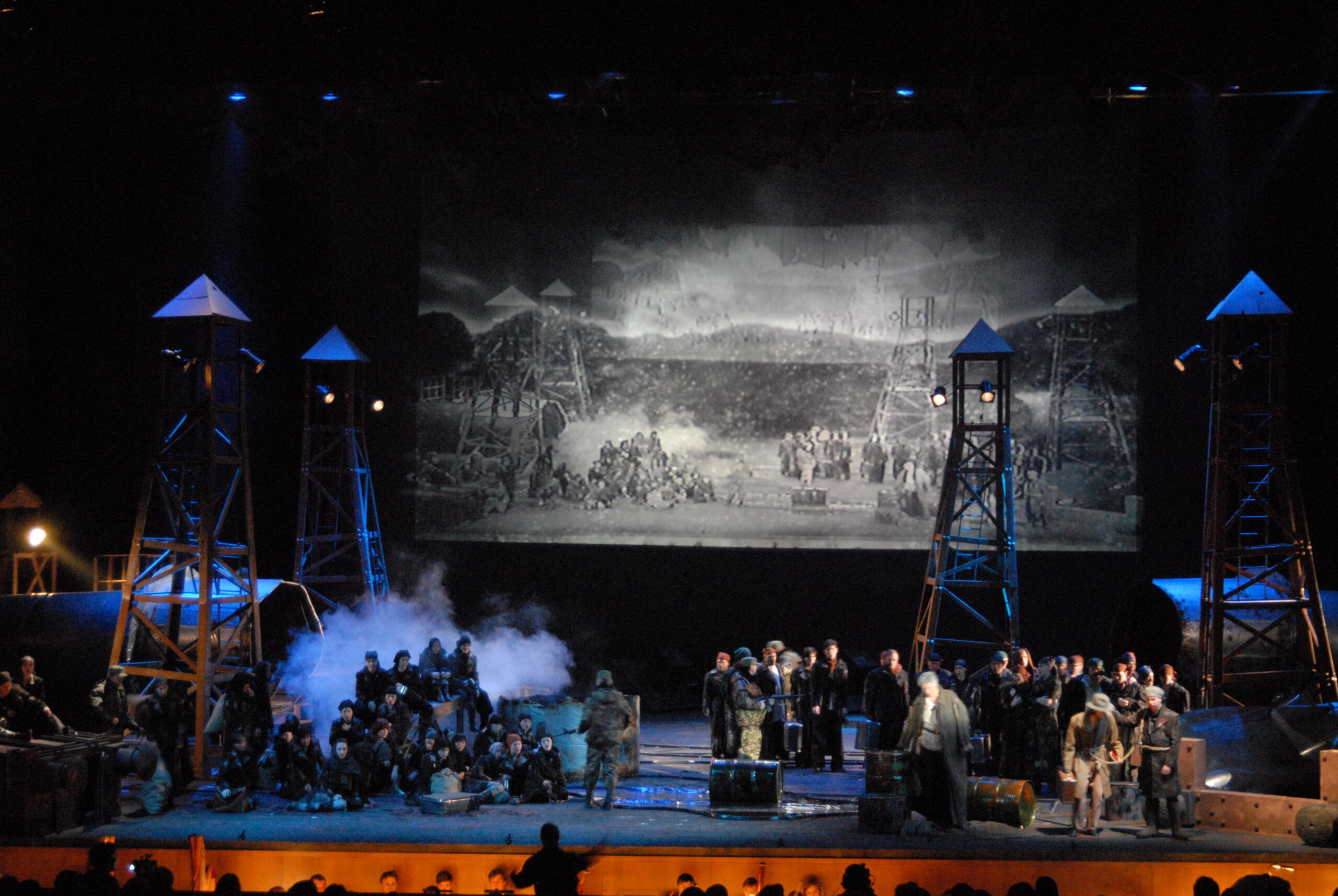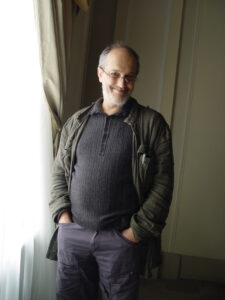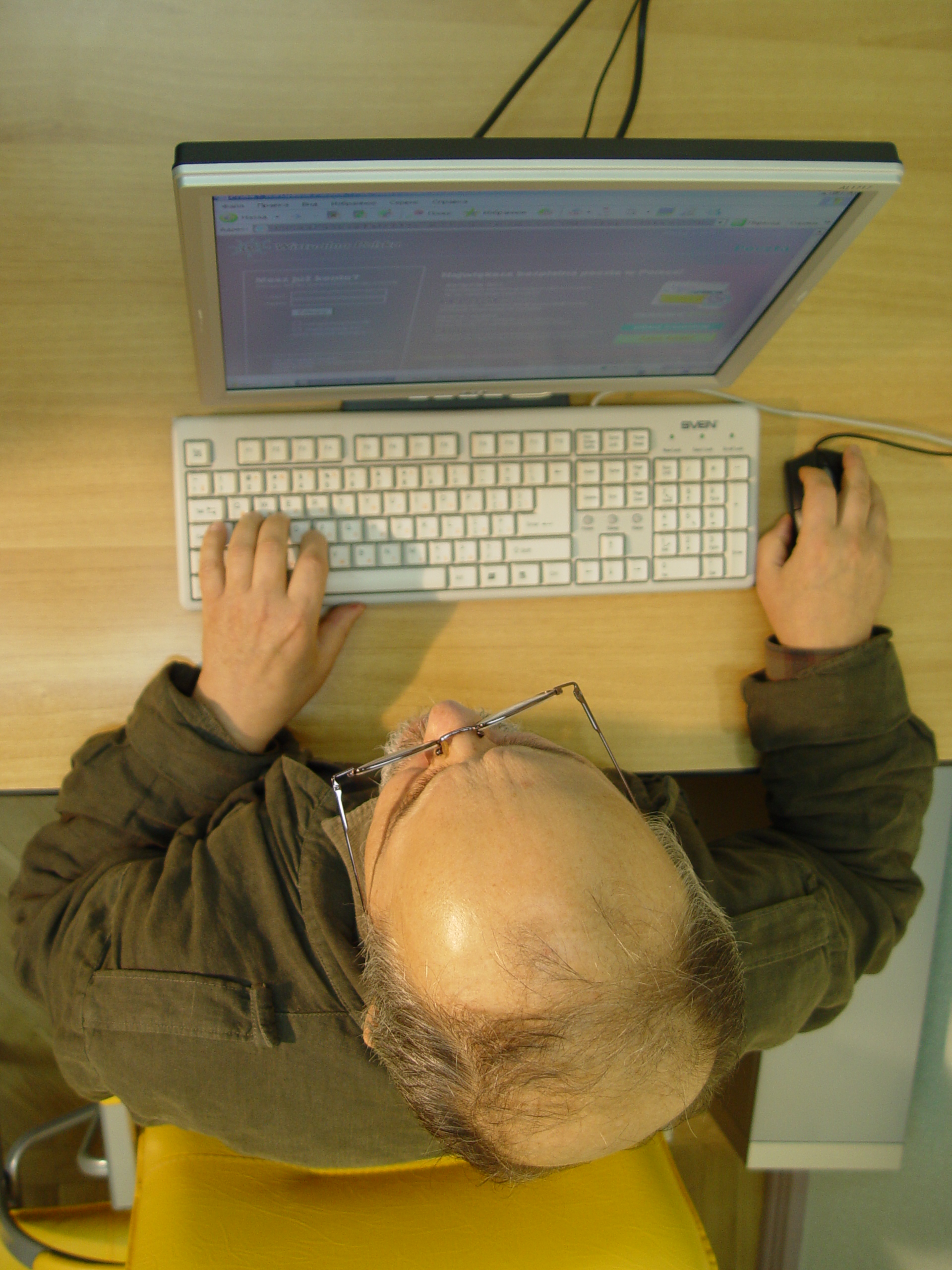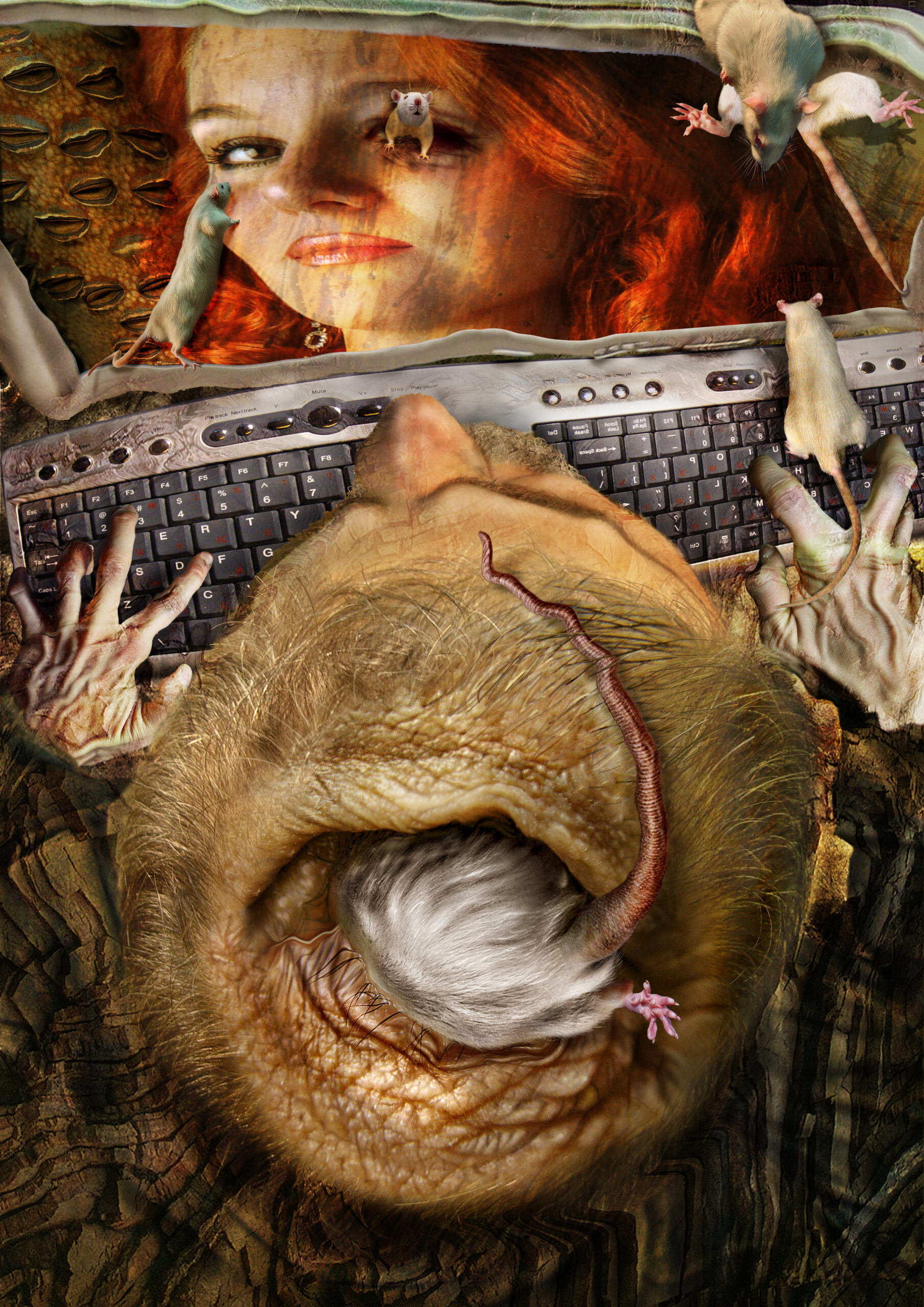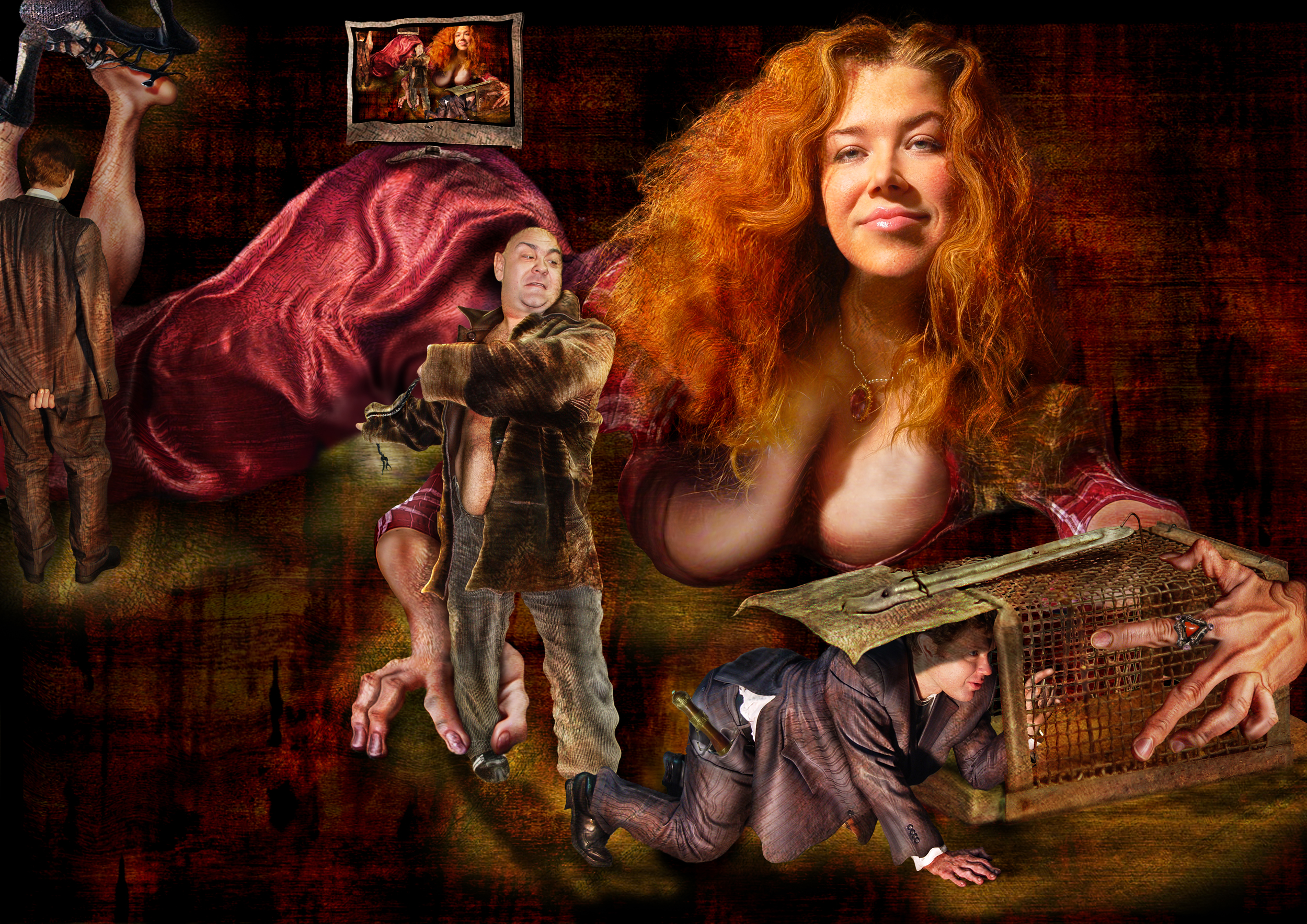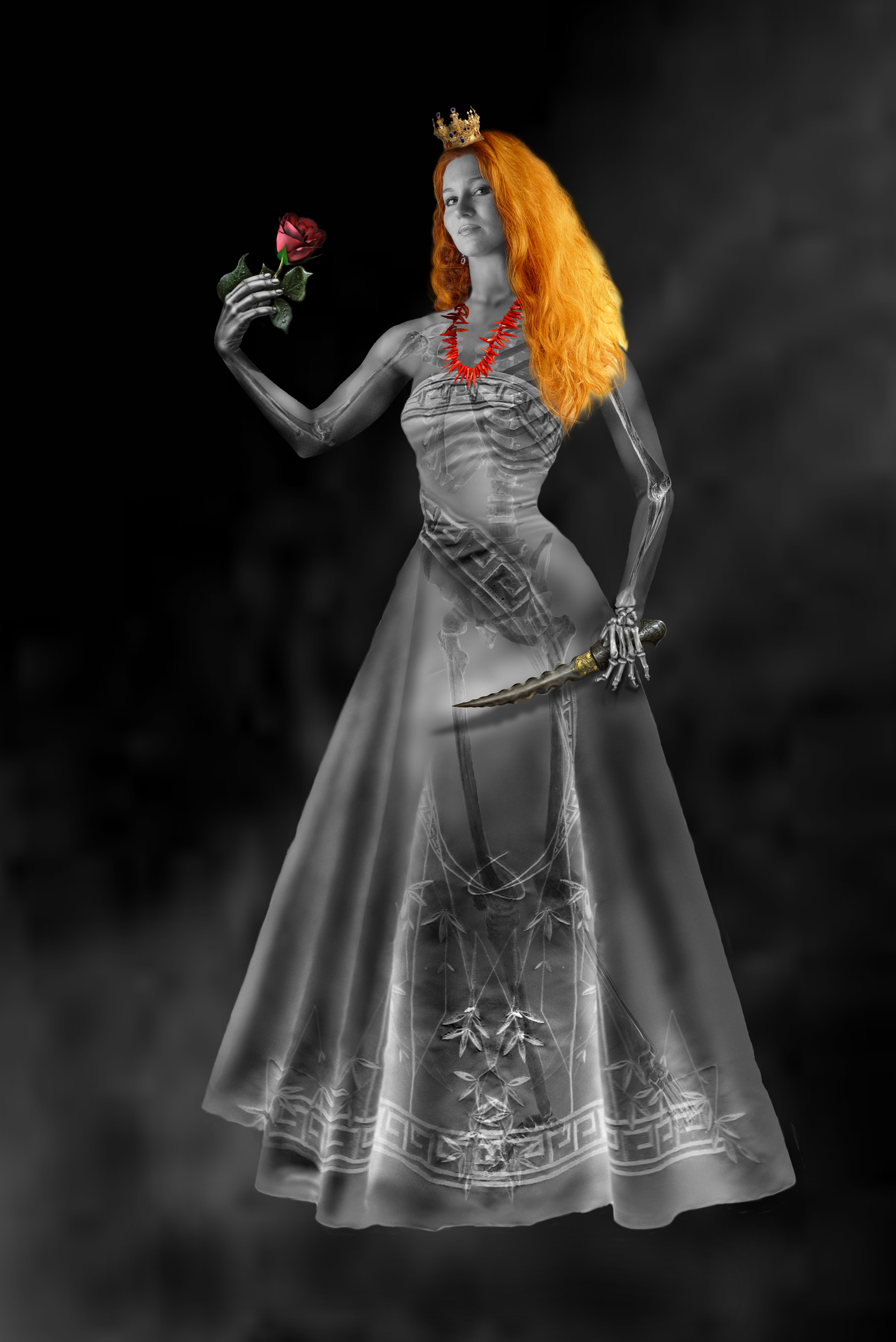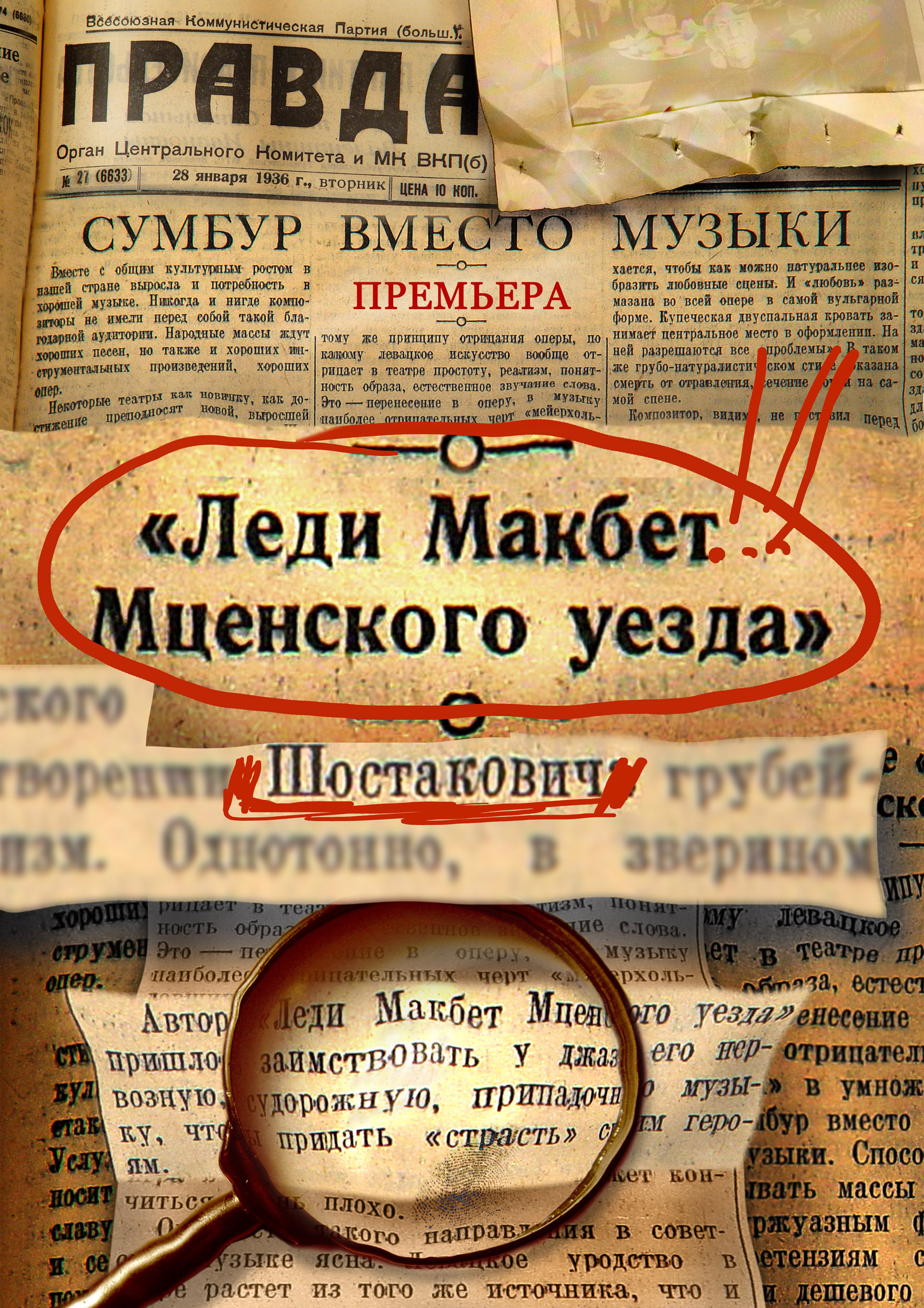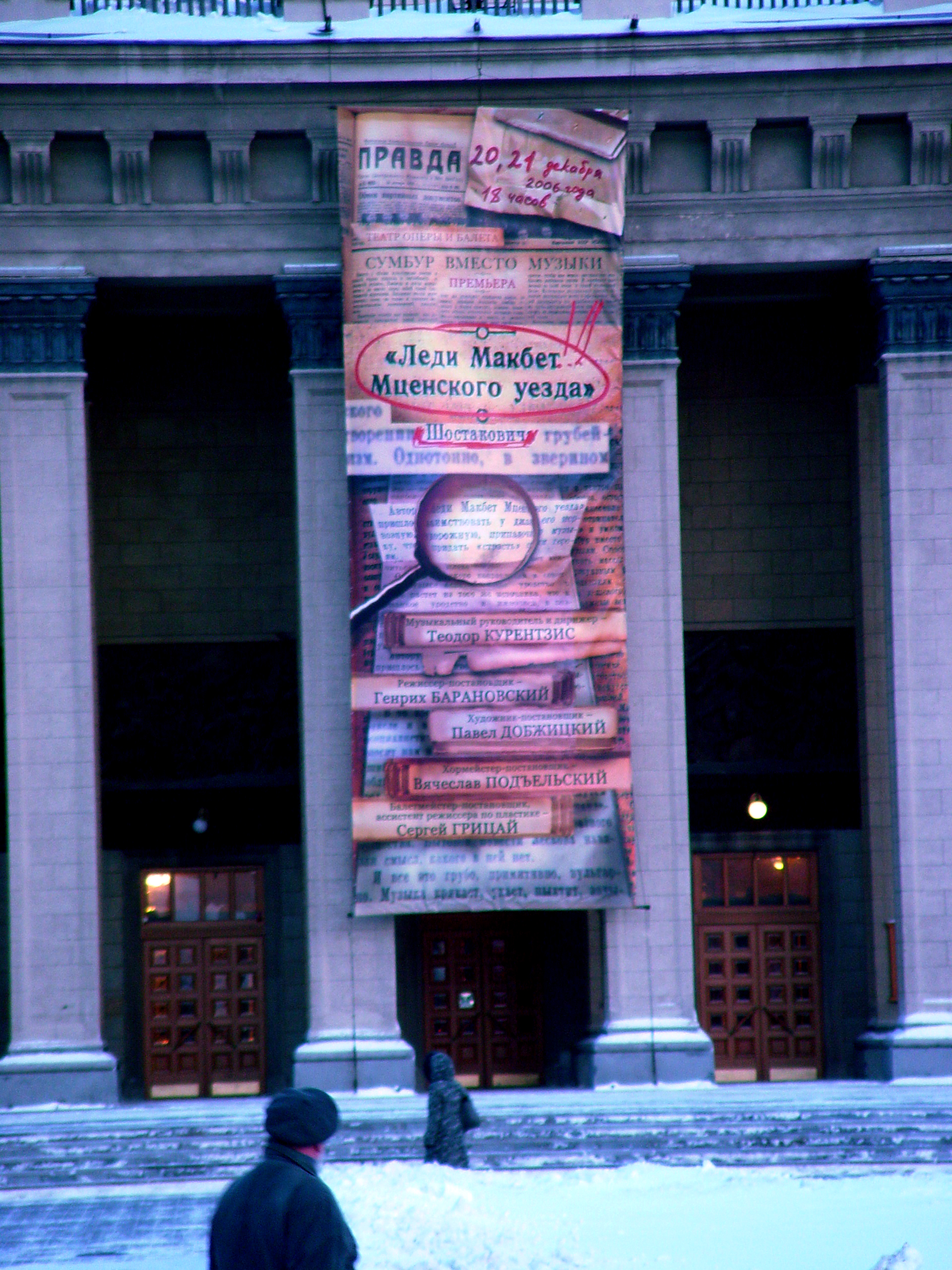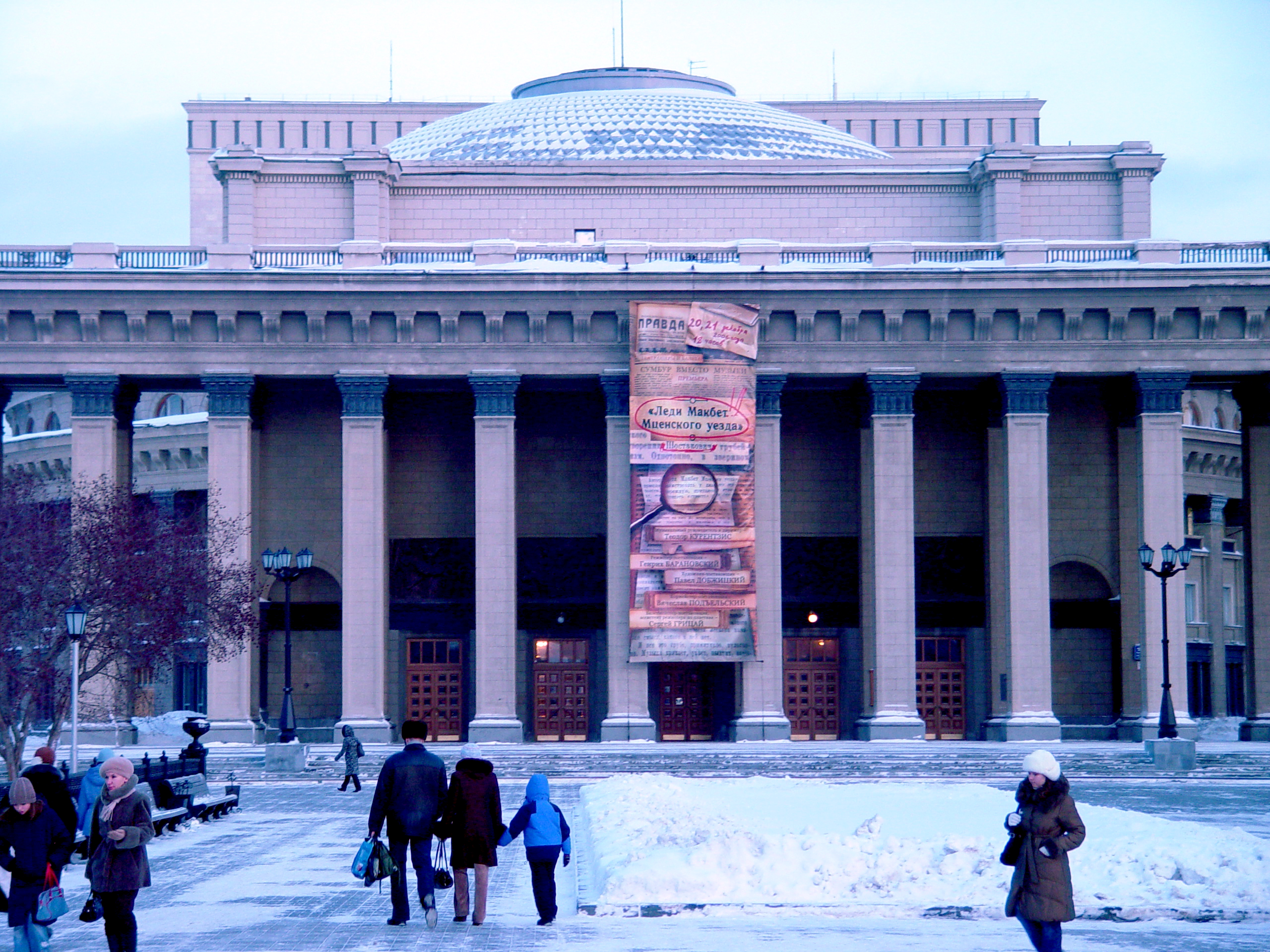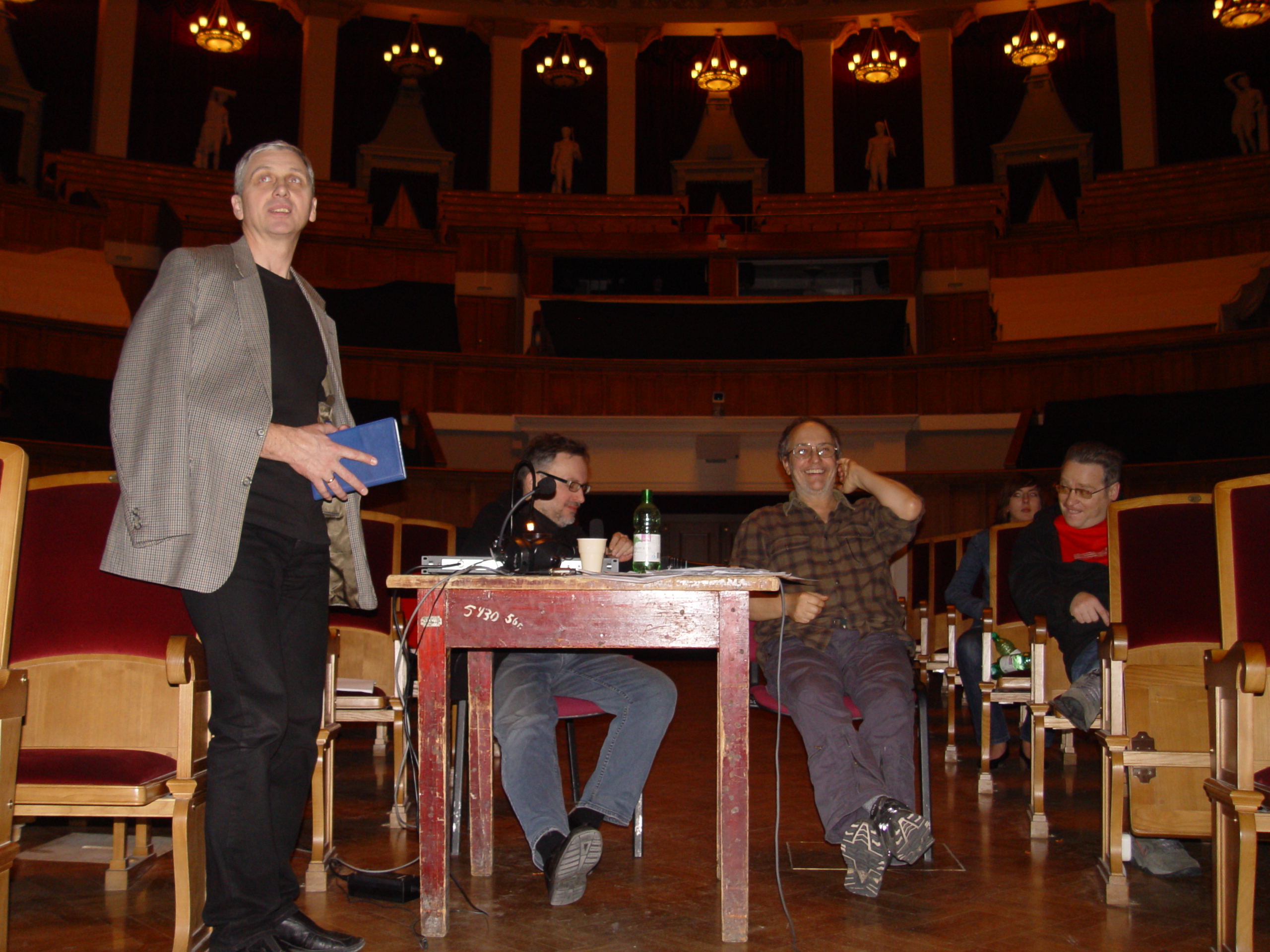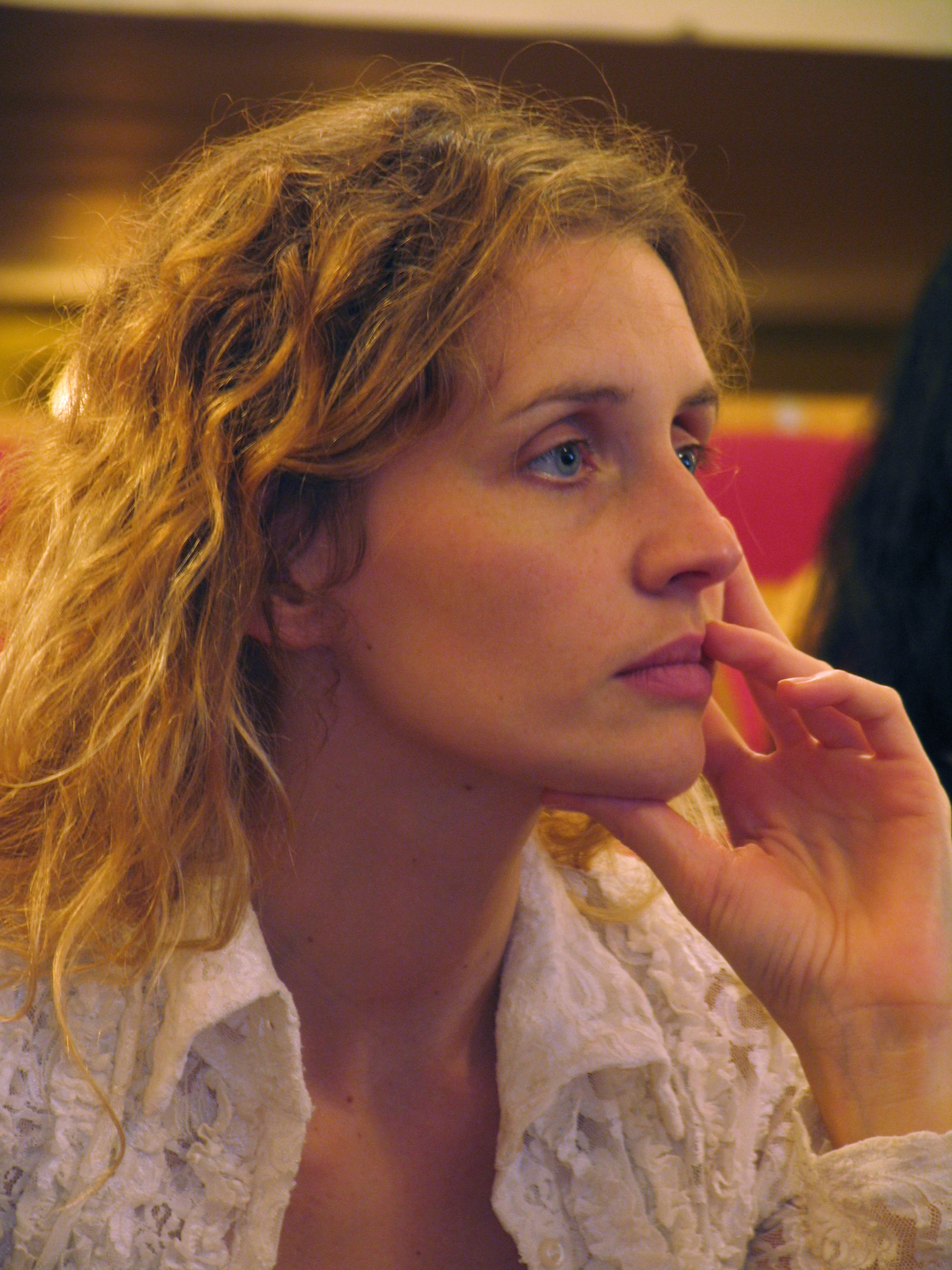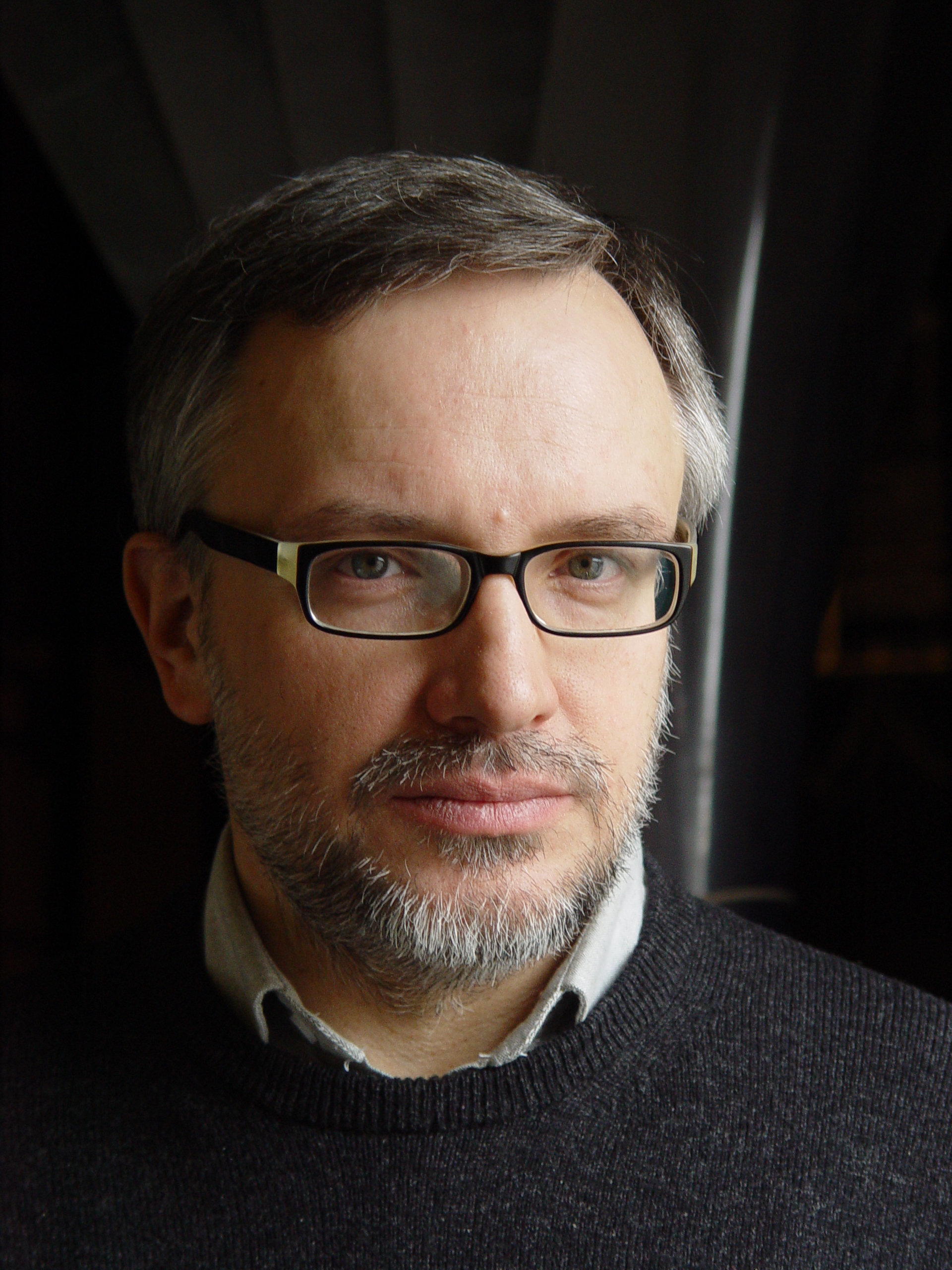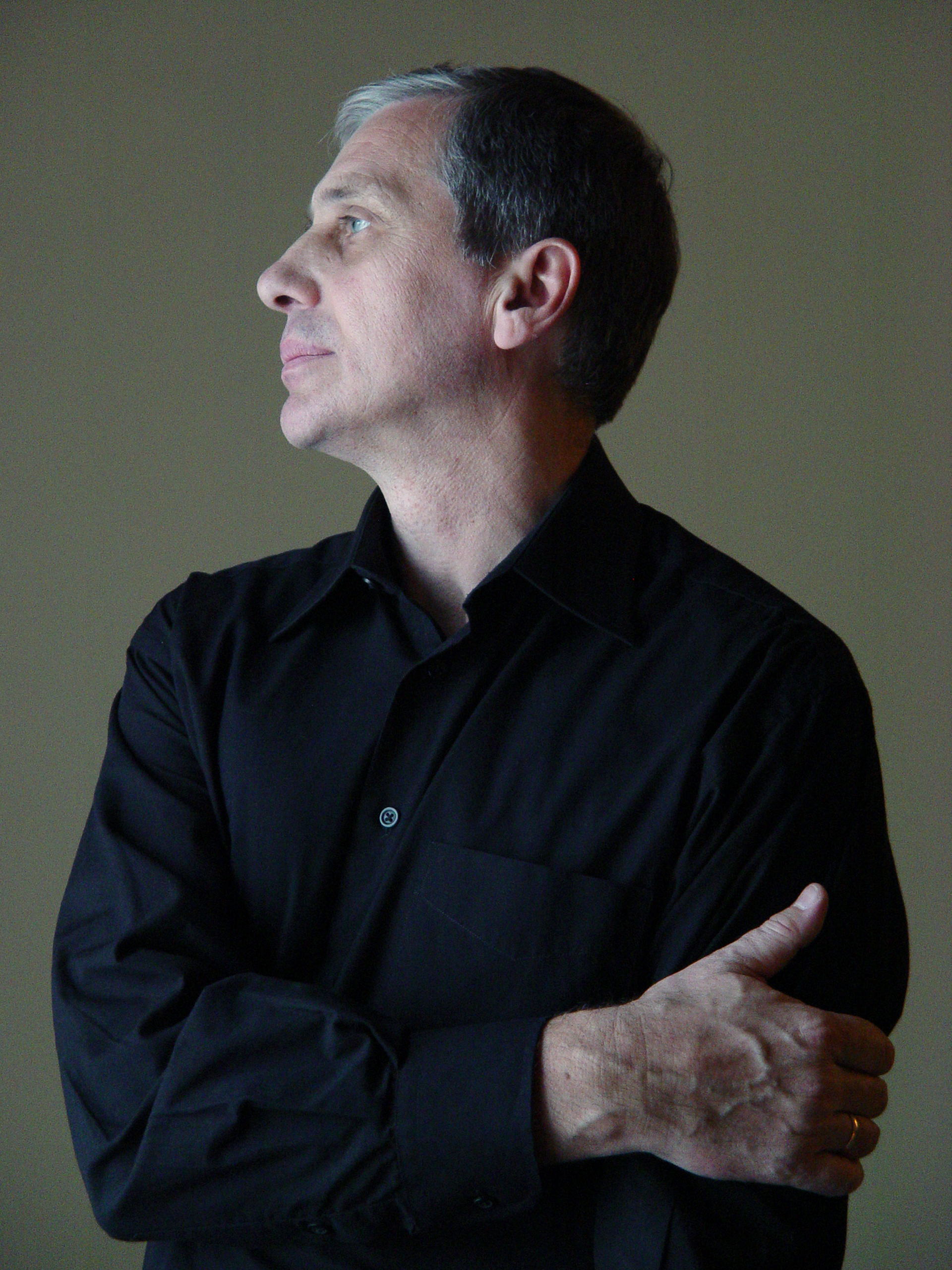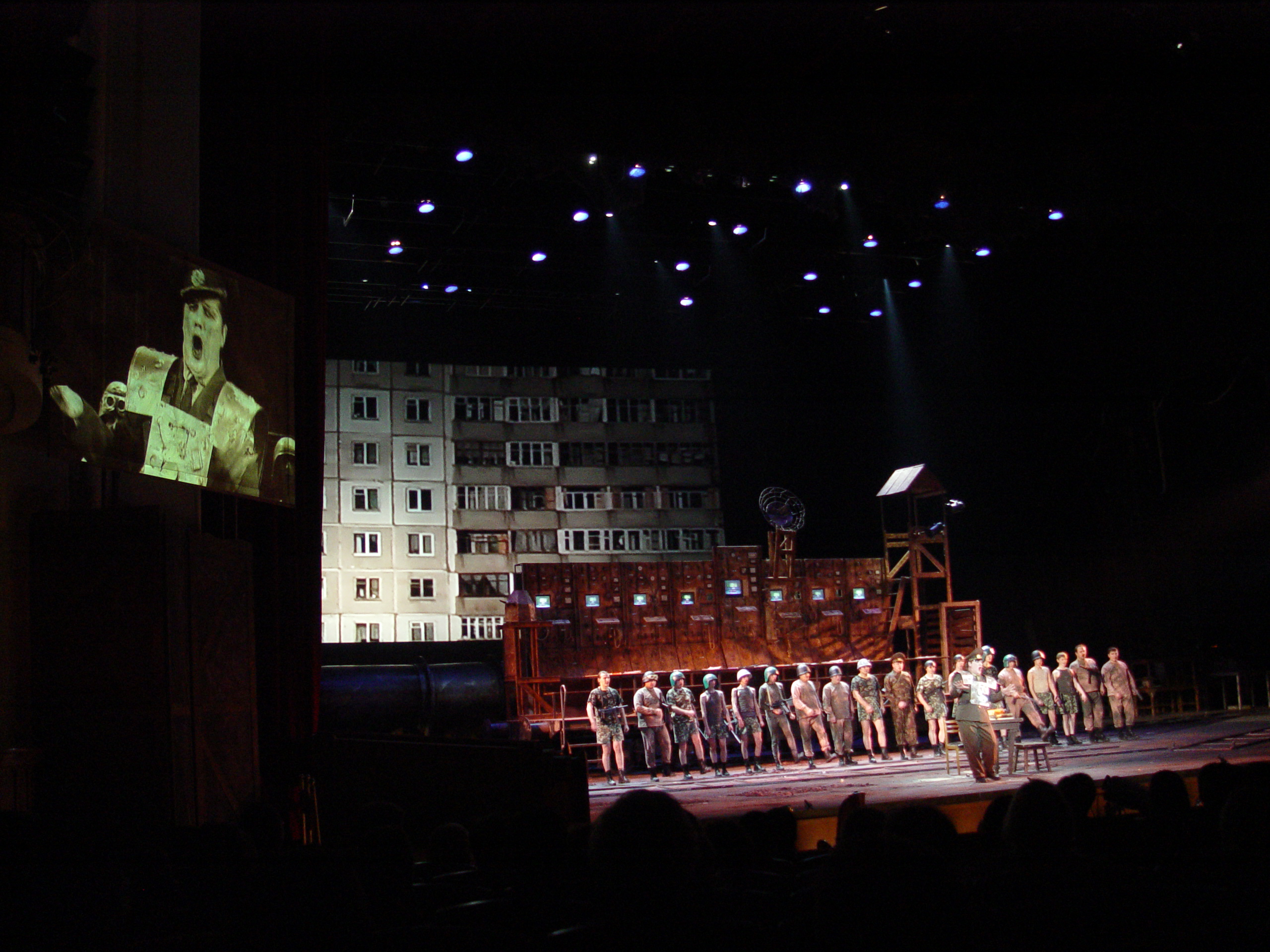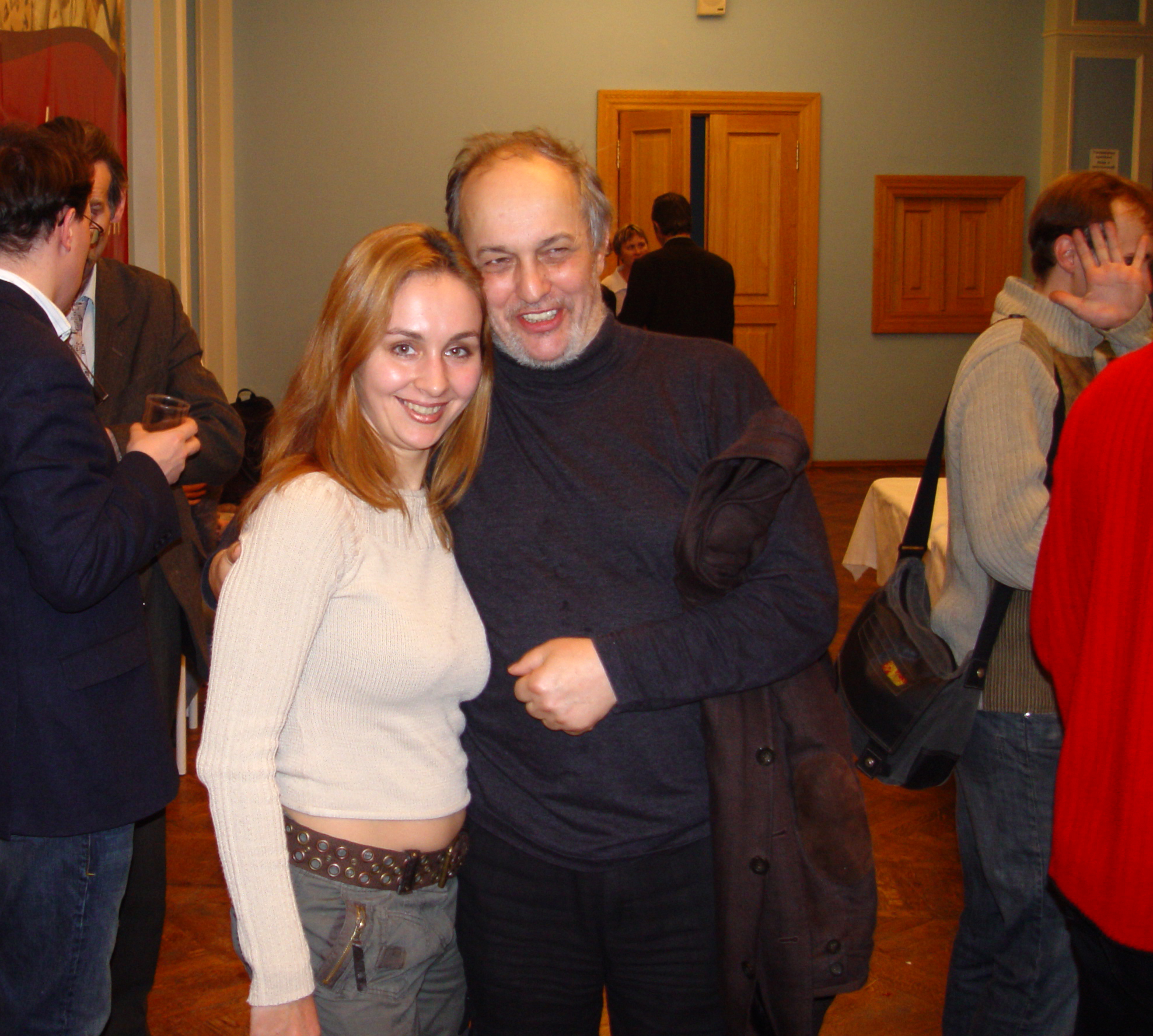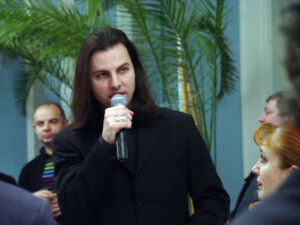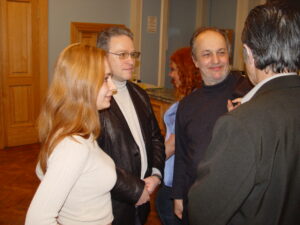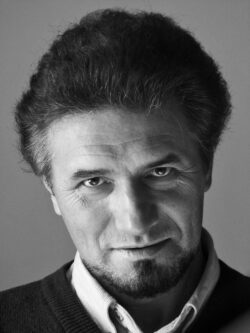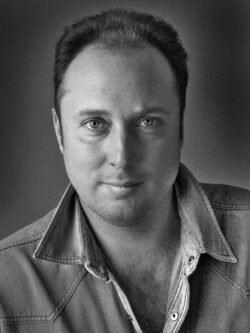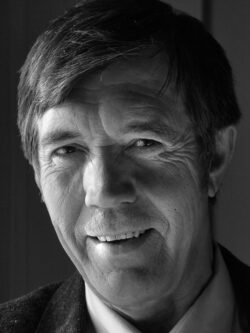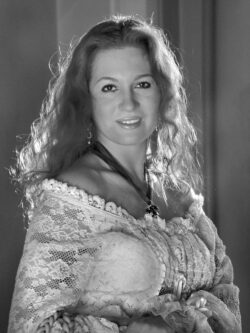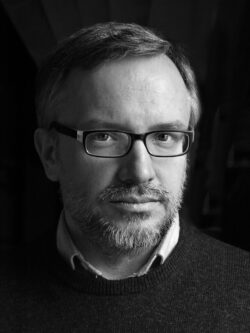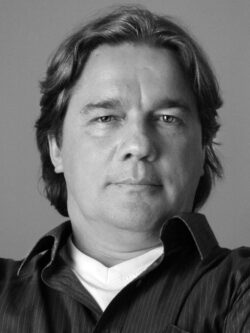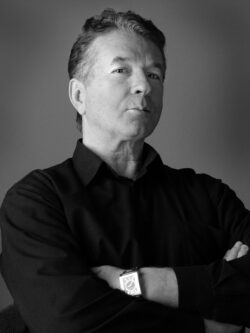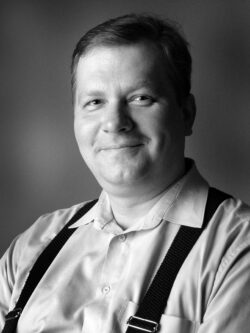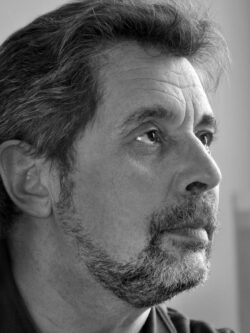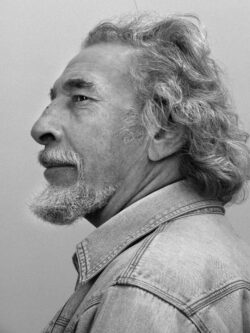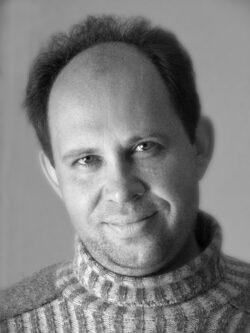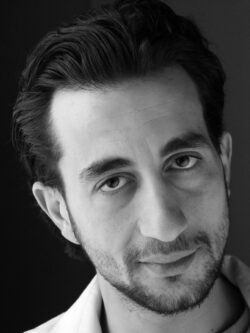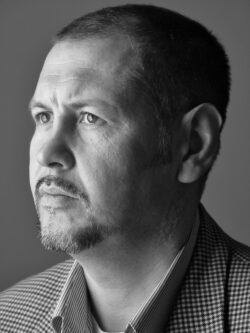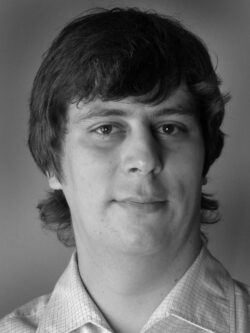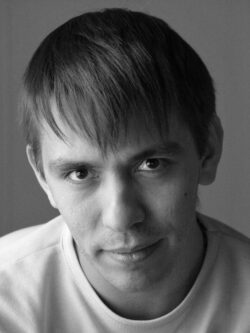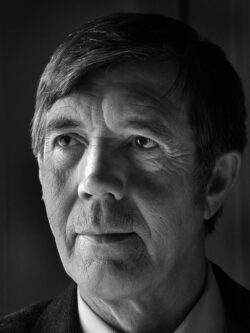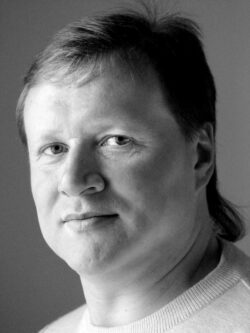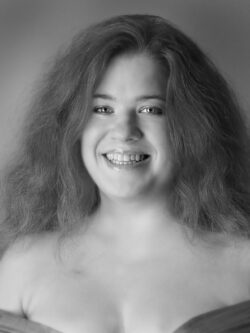Lady Macbeth of Mtsensk – Novosibirsk, December 2006
Music by Dmitri Shostakovich
Libretto by Alexander Preys and Dmitri Shostakovich
Director – Henryk Baranowski
Conductor – Teodor Currentzis
Choirmaster – Vyacheslav Pod’élsky
Production Designer – Paweł Dobrzycki
Choreographer, Assistant Director for Plastics – Sergey Gritsay
Conductors – Beljakin Peter, Alexander Bolshakov
Assistant Directors – Tatiana Grigorieva, Agnieszka Korytkowska-Mazur
Choirmaster – Sergei Tenitilov
Video Art Projections, headshots – Svetlana Bakushina
2006
Artistic Vision Meets Administrative Reality
Henryk was delighted with the poster and eagerly presented it to theater director Boris Mezdrich for final approval. I watched as Boris studied the image with grave seriousness, his expression gradually shifting to one of unmistakable disapproval.
The provocative design clearly breached his comfort zone. Boris wouldn’t endorse such a disturbing visual—concerned it might repel audiences rather than attract ticket buyers. However, what proved too controversial for theater marketing found appreciation elsewhere. The print later exhibited successfully in numerous galleries and museums, discovering its true audience among those who valued its artistic boldness.
The Mousetrap Concept
As an alternative, Henryk came up with yet another idea: this time, the main character would crawl into a mousetrap—quite literally. Lady Macbeth would be nearby, watching him enter with a smile. I shot the actual mice at the pet shop just around the corner. To represent the trapped man, I asked my cousin Sergei Besedin to appear as a model—he was a writer and journalist, and, to my surprise, readily agreed to participate in this operatic experiment. Lady Macbeth in this version was Olga Kolobova, the company’s principal soprano.
Of course, this poster met the same fate as the first.
Teodor’s Vision of Death
Then came the conductor, Teodor Currentzis, with a flair for the theatrical and his own take on visual drama. His concept? A skeleton in a flowing dress—Lady Macbeth reimagined as Death herself—with the face of another lead soprano, Olga Orlovskaya, holding a knife. Naturally, I executed that idea too. The skeleton was filmed at the Medical University right next to the opera house. Convenient, if slightly morbid.
The Final Outcome: A Theatrical Poster Saga
In the end, none of the carefully crafted posters made it beyond the conceptual dreamscape. The production, it seems, proceeded without any poster whatsoever—which, in retrospect, might have been the most revolutionary artistic statement of all.
The plot thickened when Mr. Mezdrich, the theater director, approached me with a covert mission: create a grand banner for the theater’s façade. In a masterful stroke of diplomatic maneuvering, he kept this design hidden from both Henryck and Teodor—thus avoiding the inevitable creative battlefield their competing visions would have produced. With director’s privilege, he approved the design himself, and like theatrical magic, the next morning it adorned the front of the building.
Some might call it artistic dictatorship; others, efficient leadership. But in the world of theater, sometimes the most dramatic scenes happen well before opening night!
A Glimpse Behind the Scenes
One day, I arrived with a video camera and happened to capture this brief moment: Henryk in conversation with the editor, Tatiana Ginevich, discussing the booklet design. The exchange is in Russian and offers a spontaneous, behind-the-scenes look at the creative process.
The Cherished Collaborators
Sergei Gritsay, the choreographer, was essential for all of Henryk’s projects in Russia. Their collaboration was built on deep mutual respect and understanding, and they shared not only a strong creative bond but also a genuine friendship. Sergei had a sharp eye for movement and atmosphere, and Henryk trusted him completely when it came to shaping the physical language of a production.
Paweł Dobrzycki, the Polish production designer, brought with him a wonderful sense of humor and imagination. He was always kind to me and liked to keep things light behind the scenes. Once, during a break in rehearsals, he lay down on the theater floor and pretended to be asleep, making everyone laugh. His sets were striking and poetic—he knew how to give Henryk’s visions a powerful visual world to inhabit.
Art, Friendship, and Everyday Life
When I was finishing university, my whole life revolved around art. I was constantly involved in all kinds of creative activities—countless exhibitions, film and art projects of every scale. Henryk and I had a kind of tradition: his favourite question to me was always,
“So, what will you show me this time?”
And of course, I would show him everything. He always watched my videos, prints, or little art films—things I made with very basic, often homemade, equipment. But he watched them with real interest.
A Film from My Window
In 2006, my life changed—I had a baby and spent more time at home. I lived in a very typical Soviet-style neighbourhood, in one of those identical concrete buildings on the edge of the city. My neighbours were… well, not exactly the city’s cultural elite, if I can put it like that.
From my window, I started noticing strange and often funny scenes. One day it was a wedding party, where the groom was casually smoking cannabis while waiting for the bride. There were many moments like that—absurd, sometimes darkly humorous, like little black comedy sketches playing out in real life.
I filmed everything for almost a year, always from that same window. Then I edited the footage into one documentary. To my surprise, the film did really well at festivals and appeared on television.
Henryk’s Reaction
Naturally, I showed the finished piece called Bordered by Horizon to Henryk. He started watching it with his usual serious face, focused and calm. But not for long. After just a few minutes, he burst out laughing. He laughed so hard and for so long—nearly the entire 18 minutes—that he ended up crying. The absurdity and realness of the scenes struck him as hilariously brilliant.
When it ended, he turned to me and said,
“I’m going to use some of this in Lady Macbeth.”
And that’s exactly what we did. Parts of my little home-shot documentary ended up as part of the stage projection in his theatre production.
Between Rehearsals and the Theatre Café
Between rehearsals, we’d often head to the theatre’s café for lunch. Henryk, who was going through cancer treatment at the time, was very particular about his food. He usually ordered cereal with fish—nothing else. Chicken and beef were completely off the table because, as he explained, those animals were raised full of medication. He also had a childhood story that left him unable to eat chicken at all—something about being served a beloved pet chicken he had taken care of.
No Mayonnaise, Please
He wasn’t a fan of the Russian habit of drowning everything in mayonnaise either. Every time his plate arrived, he’d scrape off the mayo and leave it piled on the side, completely untouched. He also refused to use metal cutlery, insisting on plastic forks and knives—sometimes even bringing his own, just to avoid any contact between metal and food.
One day, Paweł got himself a yogurt and was immediately scolded by Henryk:
“You’re eating chemical poison,” he declared with absolute seriousness.
rehearsals
A Night of Triumph
The premiere was a triumph. Henryk was beaming with joy—so excited, so proud, smiling the whole time. The production went on to win five “Golden Mask” national theatre awards:
-
Best Opera
-
Best Director (Henryk Baranowski)
-
Best Conductor (Teodor Currentzis)
-
Best Set Design (Paweł Dobrzycki)
-
Best Male Role (Oleg Videman)
A huge success that deserved a celebration.
Premiere Night Video
Celebration Dinner—or Something Like That
The next day, Henryk invited Paweł, Agnieszka, and me to an Italian restaurant. He hoped for a better culinary experience than our last attempt at the “Russian draniki” place. A cheerful young waitress handed us menus with glossy photos of pizza slices—and very appealing prices. We liked the look of it and ordered enthusiastically.
Surprise Pizza and a Twilight Zone Moment
But to our surprise, each of us was served a full pizza. Still, the atmosphere was great, the food was tasty, and we were having a good time—until the bill arrived.
The numbers were… alarming.
Henryk calmly pointed to the menu and said,
– We ordered this pizza.
– Yes, the waitress smiled.
– And here’s the price for the pizza we ordered.
– Yes.
– But the bill is showing a completely different price.
– No, no, this is the price for the pizza you ordered.
It went on like this in a loop. I was just waiting for her to say,
“You should have ordered boiled potatoes instead.”
We kept going in circles—it felt like negotiating with aliens in a scene from the Twilight Zone. In the end, we didn’t make a scene. We just paid the mysterious bill and left. Welcome to Russia.
Our next project together came in 2009—and that’s when the real trouble started.
Photography from the premier Night
A Crossover of Projects
When Henryk arrived for this production, I was simultaneously working on another creative project—a folk rock music video for my friend, Sayan Andriyanov. I invited Henryk to appear in one of the scenes, quietly watching the sunset.
To prepare, I visited him at his apartment and took a few photographs, which I later morphed and incorporated into the video.
Here is the result:
Actors’ Headshots
Photography by Svetlana Bakushina






